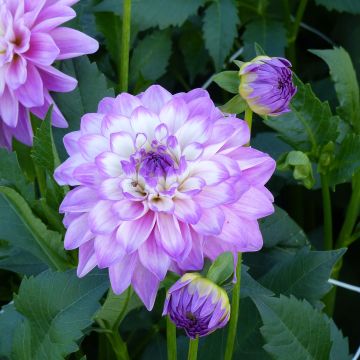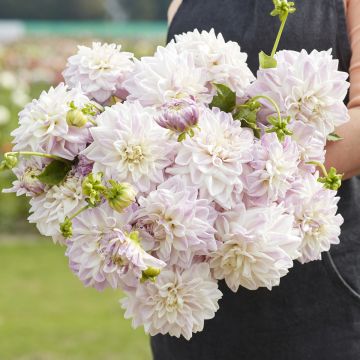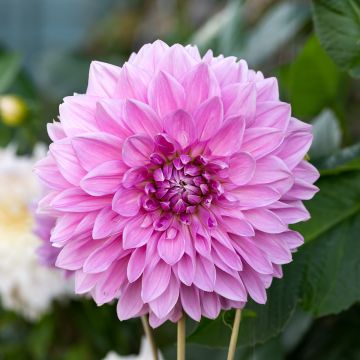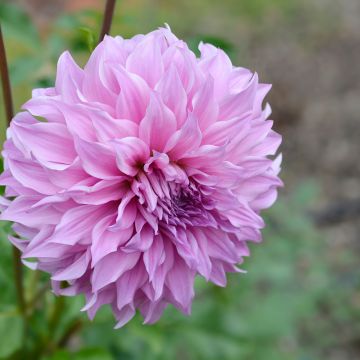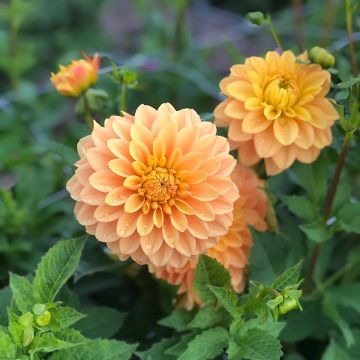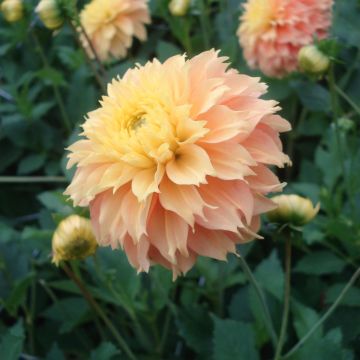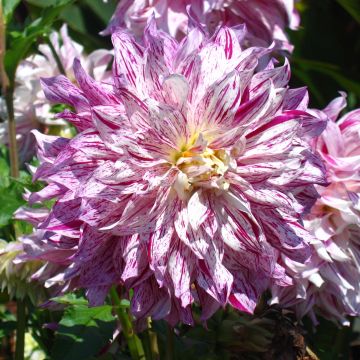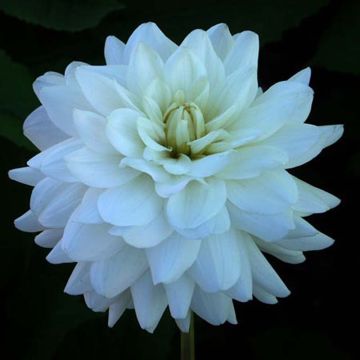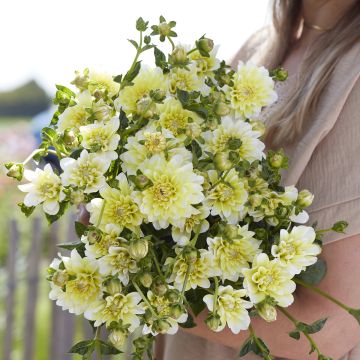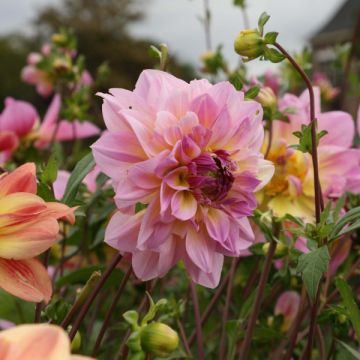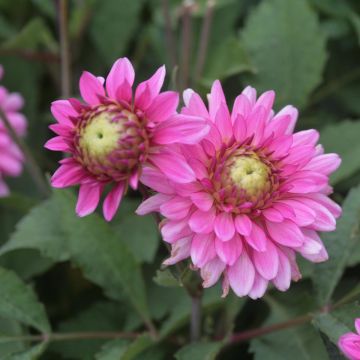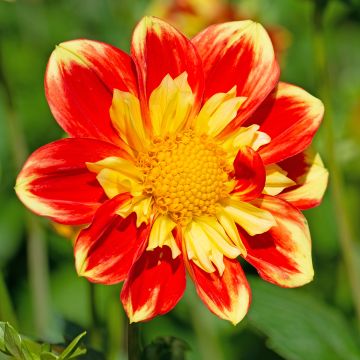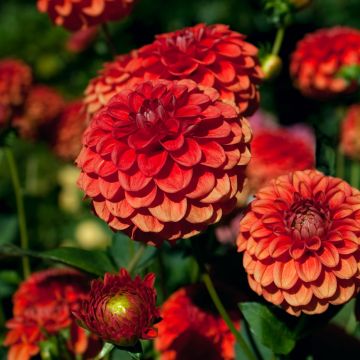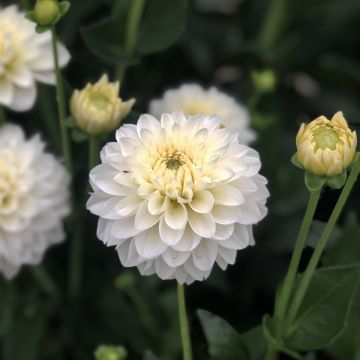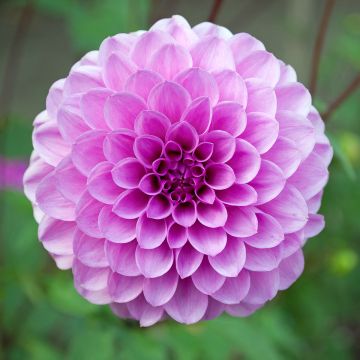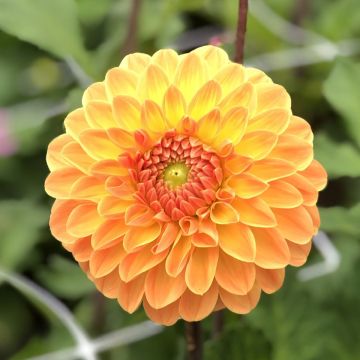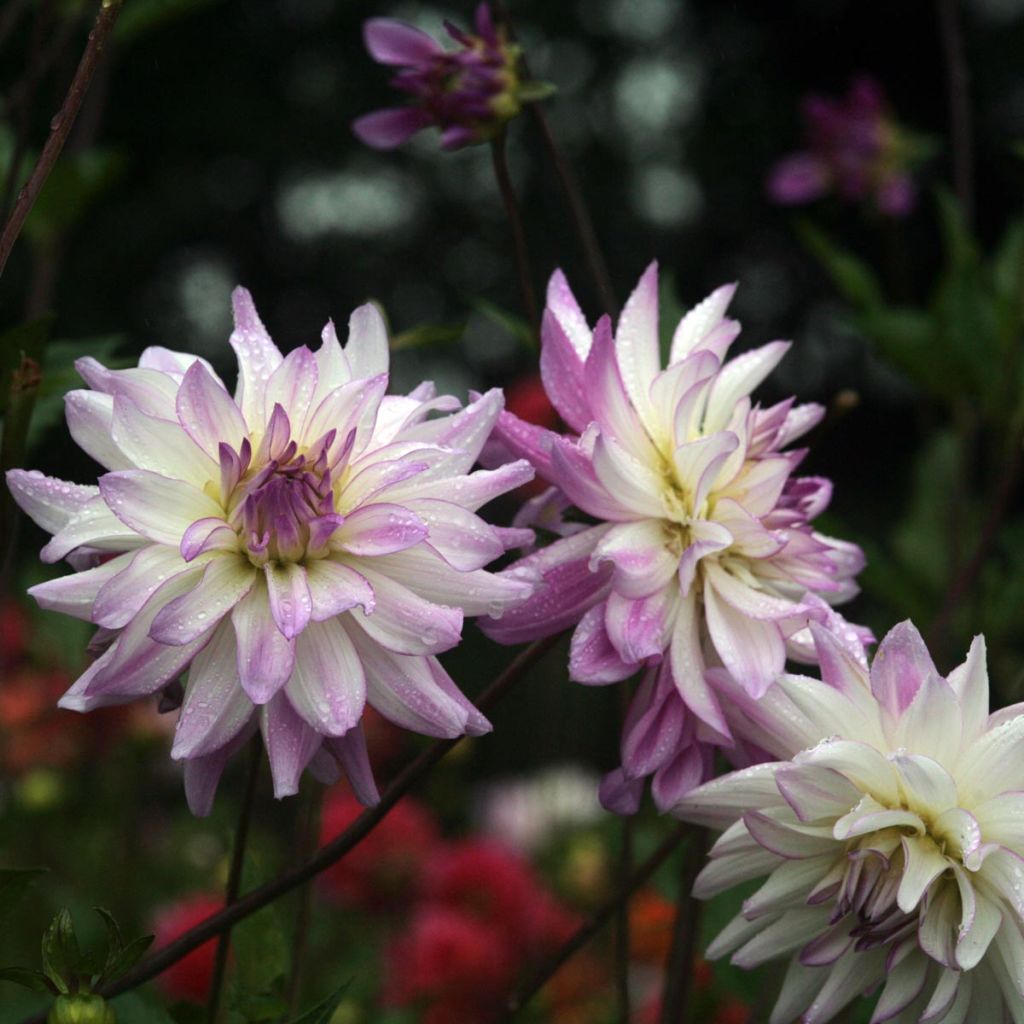

Dahlia décoratif Victoria Ann
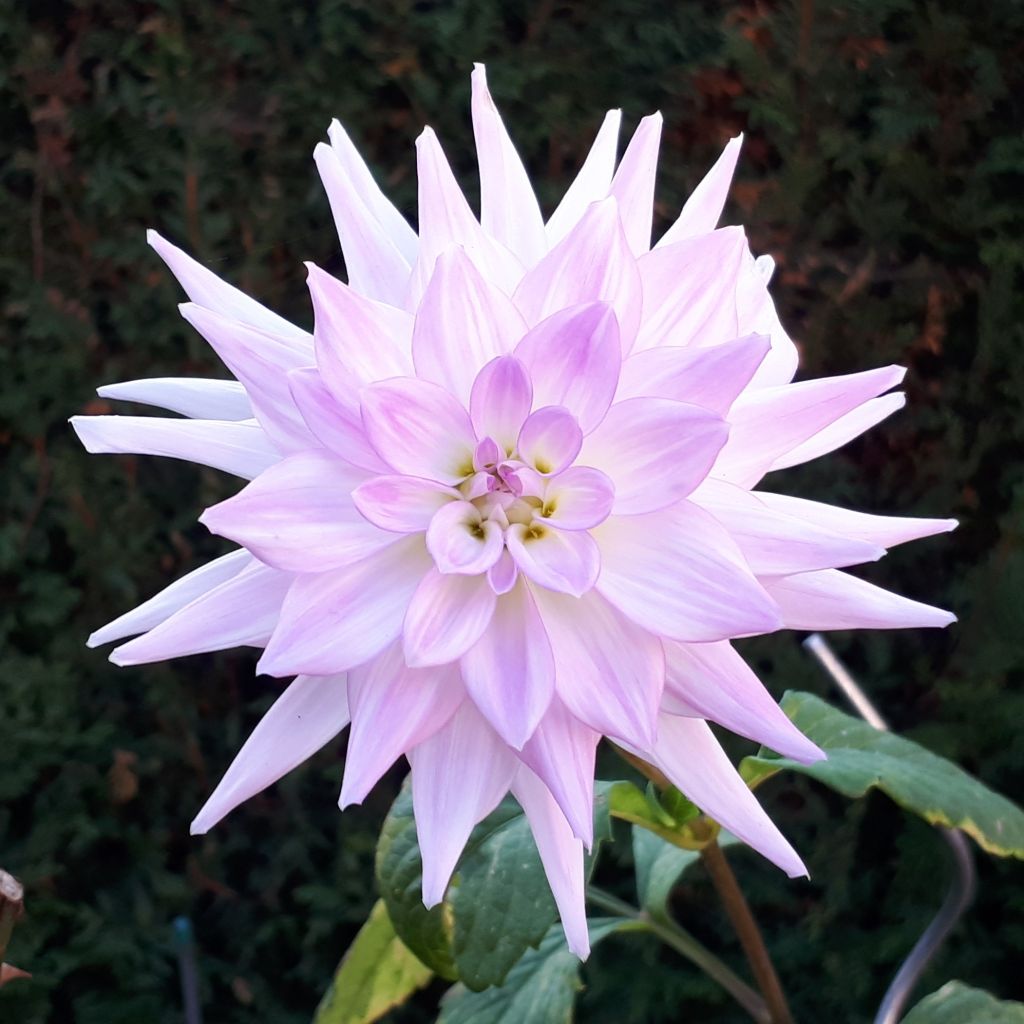

Dahlia Victoria Ann
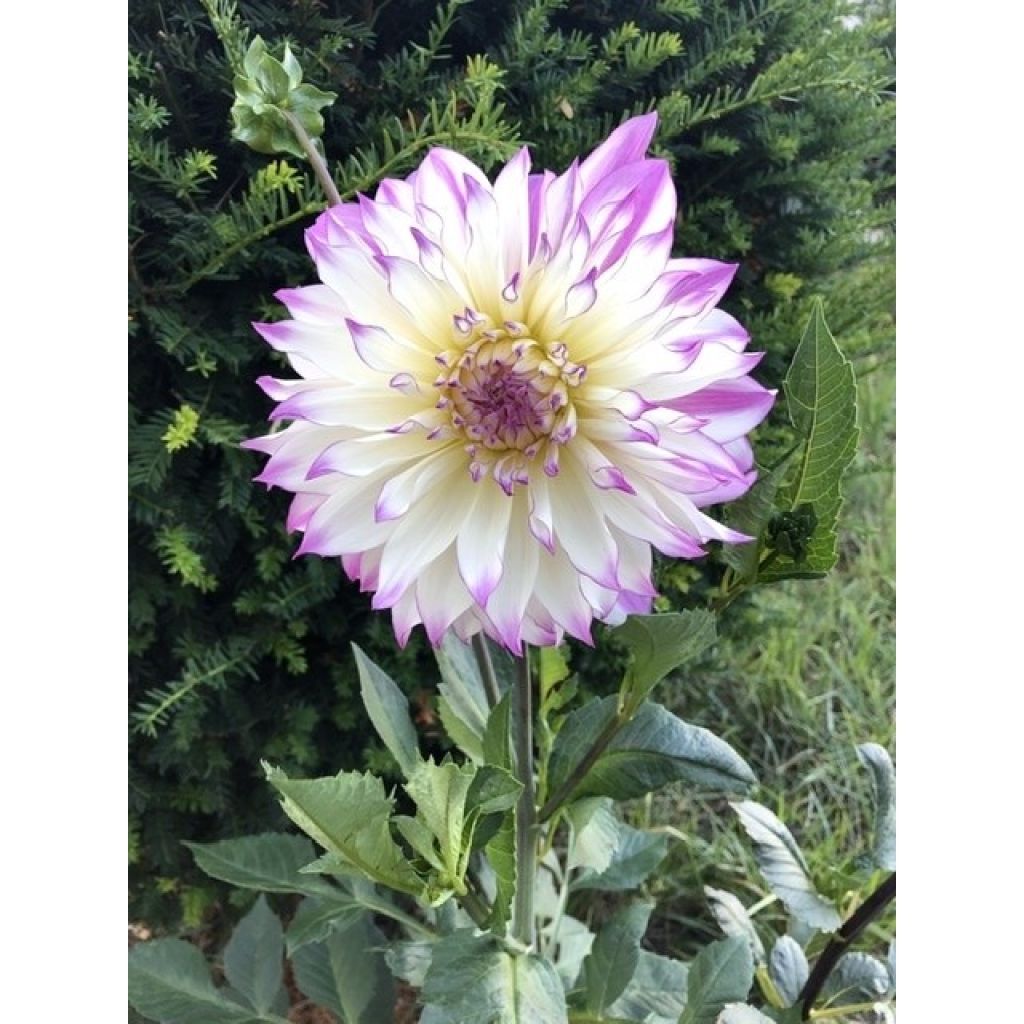

Dahlia Victoria Ann
Dahlia Victoria Ann
Dahlia Victoria Ann
Dahlia
It is a very beautiful dahlia with delicate and fresh colours.
Chantal, 27/02/2019
Why not try an alternative variety in stock?
View all →This plant carries a 6 months recovery warranty
More information
We guarantee the quality of our plants for a full growing cycle, and will replace at our expense any plant that fails to recover under normal climatic and planting conditions.
From €5.90 for pickup delivery and €6.90 for home delivery
Express home delivery from €8.90.
Does this plant fit my garden?
Set up your Plantfit profile →
Description
Dahlia 'Victoria Ann', placed in the category of decorative dahlias, is a large-flowered variety of impressive size. The white ligules, edged and tipped with amethyst, have a luminous effect that will complement your summer-flowering borders and brighten up the autumn.
Dahlias belong to the large family of Asteraceae and are originally from the high plateaus of Mexico. Currently, the approximately 20,000 horticultural varieties created by humans have arrived in gardens around the world, much to our delight. Dahlias are classified according to the shape of their heads. The flowers of decorative dahlias are thicker than they are wide and are often large in size. The heads of 'Victoria Ann' are 10 to 15 cm (4 to 6in) in diameter, full and fully double. Numerous rows of ligules overlap. Those in the lower layers are revolute (turned towards the stem), while those in the upper layers are inflexed towards the centre. They are delicately edged and tipped with amethyst and slightly concave, with a touch of lime green at the base to perfect their uniqueness. The shorter central florets form an amethyst button.
The dense, bushy silhouette reaches a height of 120 cm (47in) and a width of 80 cm (32in). The highly branched stems are hollow and the leaves are opposite and pinnatisect, meaning they have very denticulate lobes. As a large variety, it is important to ensure that its width is reinforced to strengthen it or to stake it.
Dahlias have an exceptionally long flowering period, starting in July and ending in October. To encourage repeat flowering and extend this period, be sure to remove faded flowers. Better yet, regularly cut them to create attractive colourful bouquets by combining different varieties. Dahlias are easy to grow but require some maintenance as the tubers need to be stored during winter. In the back of the border, the feathery foliage of bronze fennel and diamond grass will enhance the texture of your giant Dahlia varieties. The colors of 'Victoria Ann' will go well with purples and lime greens. They will also blend perfectly with a mix of dahlias and grasses for a cheerful autumn scene.
Report an error about the product description
Dahlia Victoria Ann in pictures
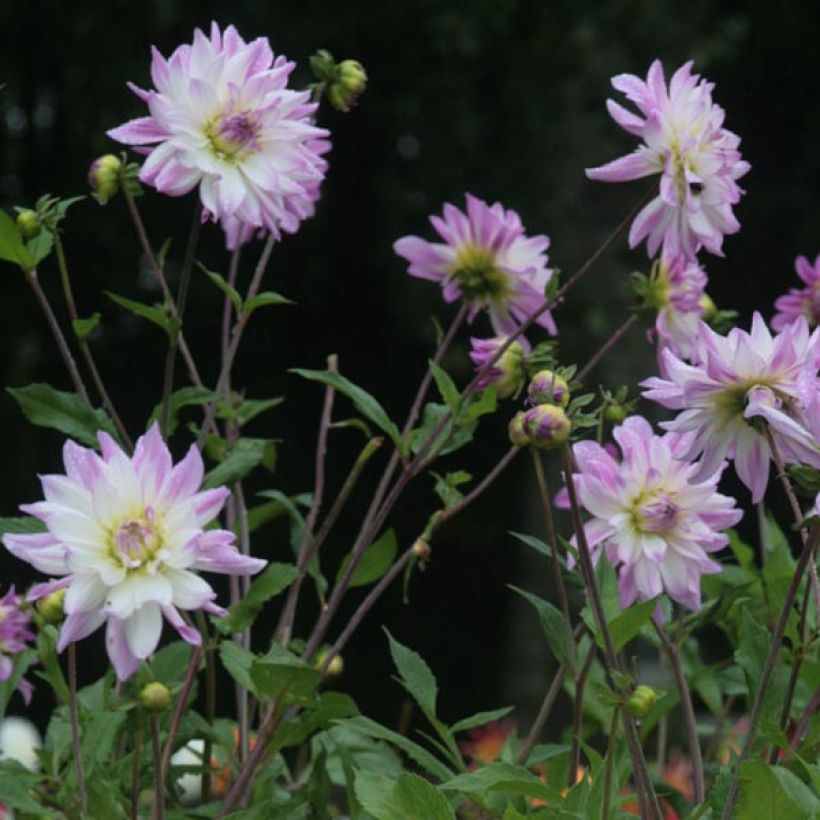

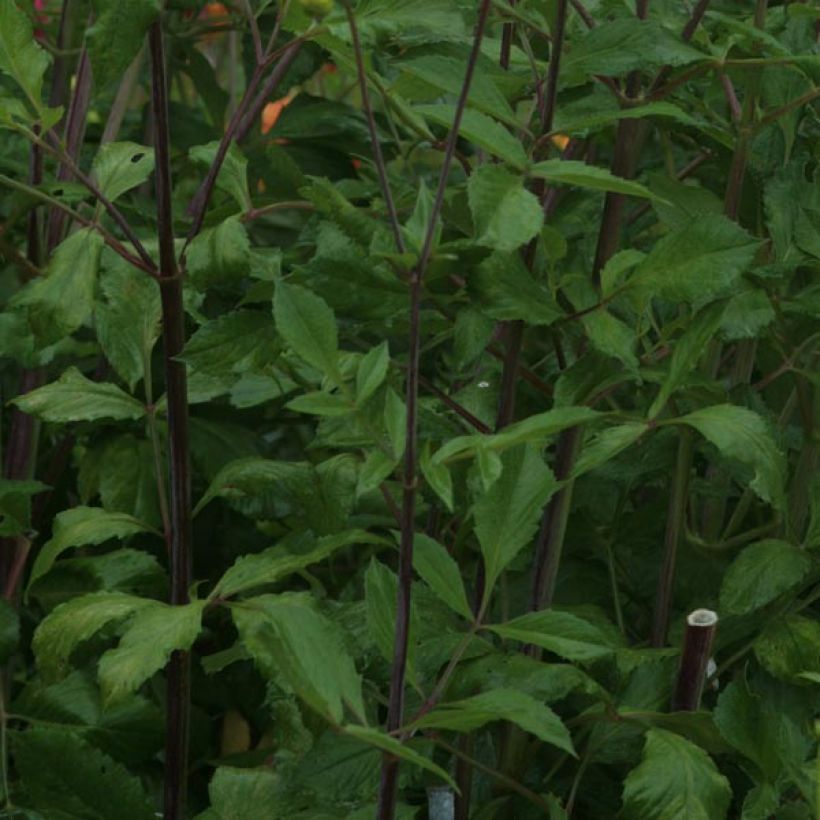

Plant habit
Flowering
Foliage
Botanical data
Dahlia
Victoria Ann
Asteraceae
Dahlia
Cultivar or hybrid
Other Ornamental Dahlias
Planting and care
Plant your dahlias in good weather in soil that has been deeply worked and enriched, for example, with bonemeal.Plant the tubers in full sun as soon as the last frost is over. Rich, damp, and well-drained soil is perfect. However, waterlogging would promote tuber rot. Feel free to amend the soil with compost and sand if necessary. Work the soil deeply and enrich it, for example, with bonemeal. Place your tuber and crumble the soil well to fill without air pockets. Your dahlia should be covered with about 6 cm (2in) of soil. At the end of planting, water generously once and then regularly repeat this watering during the first 6 weeks to help with rooting.
Dahlias are sensitive to cold, so they need to be overwintered. In November, the first frost blackens the foliage, which is the time to dig them up. Carefully remove the tubers, removing as much soil as possible. Let the foliage dry so that the tubers can replenish their reserves. Then cut the stems to 10 cm (4in). Spread your bulbs in a box on newspaper. Store them in a frost-free, dry, cool, and dark place, such as a frost-free garage or attic, for example. In warmer regions, or areas close to the coast, where there are few frosty days per year, it is possible to leave them in place. In this case, simply cover the ground with a carpet of leaves or straw for protection.
Planting period
Intended location
Care
-
, onOrder confirmed
Reply from on Promesse de fleurs
Dahlias
Haven't found what you were looking for?
Hardiness is the lowest winter temperature a plant can endure without suffering serious damage or even dying. However, hardiness is affected by location (a sheltered area, such as a patio), protection (winter cover) and soil type (hardiness is improved by well-drained soil).

Photo Sharing Terms & Conditions
In order to encourage gardeners to interact and share their experiences, Promesse de fleurs offers various media enabling content to be uploaded onto its Site - in particular via the ‘Photo sharing’ module.
The User agrees to refrain from:
- Posting any content that is illegal, prejudicial, insulting, racist, inciteful to hatred, revisionist, contrary to public decency, that infringes on privacy or on the privacy rights of third parties, in particular the publicity rights of persons and goods, intellectual property rights, or the right to privacy.
- Submitting content on behalf of a third party;
- Impersonate the identity of a third party and/or publish any personal information about a third party;
In general, the User undertakes to refrain from any unethical behaviour.
All Content (in particular text, comments, files, images, photos, videos, creative works, etc.), which may be subject to property or intellectual property rights, image or other private rights, shall remain the property of the User, subject to the limited rights granted by the terms of the licence granted by Promesse de fleurs as stated below. Users are at liberty to publish or not to publish such Content on the Site, notably via the ‘Photo Sharing’ facility, and accept that this Content shall be made public and freely accessible, notably on the Internet.
Users further acknowledge, undertake to have ,and guarantee that they hold all necessary rights and permissions to publish such material on the Site, in particular with regard to the legislation in force pertaining to any privacy, property, intellectual property, image, or contractual rights, or rights of any other nature. By publishing such Content on the Site, Users acknowledge accepting full liability as publishers of the Content within the meaning of the law, and grant Promesse de fleurs, free of charge, an inclusive, worldwide licence for the said Content for the entire duration of its publication, including all reproduction, representation, up/downloading, displaying, performing, transmission, and storage rights.
Users also grant permission for their name to be linked to the Content and accept that this link may not always be made available.
By engaging in posting material, Users consent to their Content becoming automatically accessible on the Internet, in particular on other sites and/or blogs and/or web pages of the Promesse de fleurs site, including in particular social pages and the Promesse de fleurs catalogue.
Users may secure the removal of entrusted content free of charge by issuing a simple request via our contact form.
The flowering period indicated on our website applies to countries and regions located in USDA zone 8 (France, the United Kingdom, Ireland, the Netherlands, etc.)
It will vary according to where you live:
- In zones 9 to 10 (Italy, Spain, Greece, etc.), flowering will occur about 2 to 4 weeks earlier.
- In zones 6 to 7 (Germany, Poland, Slovenia, and lower mountainous regions), flowering will be delayed by 2 to 3 weeks.
- In zone 5 (Central Europe, Scandinavia), blooming will be delayed by 3 to 5 weeks.
In temperate climates, pruning of spring-flowering shrubs (forsythia, spireas, etc.) should be done just after flowering.
Pruning of summer-flowering shrubs (Indian Lilac, Perovskia, etc.) can be done in winter or spring.
In cold regions as well as with frost-sensitive plants, avoid pruning too early when severe frosts may still occur.
The planting period indicated on our website applies to countries and regions located in USDA zone 8 (France, United Kingdom, Ireland, Netherlands).
It will vary according to where you live:
- In Mediterranean zones (Marseille, Madrid, Milan, etc.), autumn and winter are the best planting periods.
- In continental zones (Strasbourg, Munich, Vienna, etc.), delay planting by 2 to 3 weeks in spring and bring it forward by 2 to 4 weeks in autumn.
- In mountainous regions (the Alps, Pyrenees, Carpathians, etc.), it is best to plant in late spring (May-June) or late summer (August-September).
The harvesting period indicated on our website applies to countries and regions in USDA zone 8 (France, England, Ireland, the Netherlands).
In colder areas (Scandinavia, Poland, Austria...) fruit and vegetable harvests are likely to be delayed by 3-4 weeks.
In warmer areas (Italy, Spain, Greece, etc.), harvesting will probably take place earlier, depending on weather conditions.
The sowing periods indicated on our website apply to countries and regions within USDA Zone 8 (France, UK, Ireland, Netherlands).
In colder areas (Scandinavia, Poland, Austria...), delay any outdoor sowing by 3-4 weeks, or sow under glass.
In warmer climes (Italy, Spain, Greece, etc.), bring outdoor sowing forward by a few weeks.

































